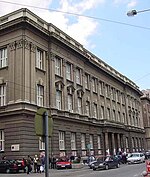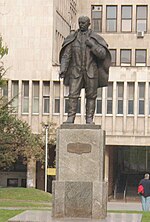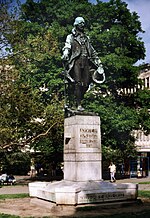Operation Retribution (German: Unternehmen Strafgericht), also known as Operation Punishment, was the April 1941 German bombing of Belgrade, the capital of Yugoslavia, in retaliation for the coup d'état that overthrew the government that had signed the Tripartite Pact. The bombing occurred in the first days of the German-led Axis invasion of Yugoslavia during World War II. The Royal Yugoslav Army Air Force (VVKJ) had only 77 modern fighter aircraft available to defend Belgrade against the hundreds of German fighters and bombers that struck in the first wave early on 6 April. Three days prior, VVKJ Major Vladimir Kren had defected to the Germans, disclosing the locations of multiple military assets and divulging the VVKJ's codes.
Three more waves of bombers attacked Belgrade on 6 April, and more attacks followed in subsequent days. The attacks resulted in the paralysis of Yugoslav civilian and military command and control, the widespread destruction of Belgrade's infrastructure, and many civilian casualties. The ground invasion had begun a few hours earlier, and air attacks were also made on VVKJ airfields and other strategic targets across Yugoslavia. Among the non-military targets struck during the bombing were the National Library of Serbia, which burned to the ground with the loss of hundreds of thousands of books and manuscripts, and the Belgrade Zoo.
In retaliation for the invasion of Yugoslavia, which surrendered on 17 April, the Royal Air Force carried out two bombing raids on Sofia, the capital of Axis Bulgaria, which later took part in Yugoslavia's partition. The senior Luftwaffe officer responsible for the bombing, Generaloberst Alexander Löhr, was captured by the Yugoslavs at the end of the war and was tried and executed for war crimes, in part for his involvement in the bombing of Belgrade. Kren was arrested in 1947 on unrelated charges of war crimes stemming from his subsequent service as the head of the Air Force of the Independent State of Croatia. He was extradited to Yugoslavia to face trial, convicted on all counts, and executed in 1948. A monument erected in Zemun in 1997 commemorates the airmen killed in Belgrade's defence. The bombing has been dramatised in literature and film.











